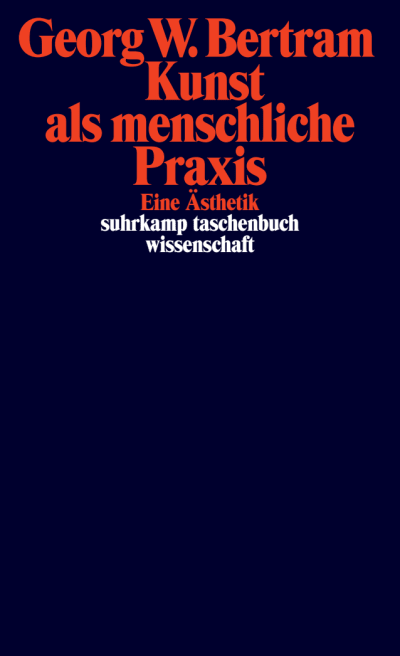English world rights (Bloomsbury), Spanish world rights (Comares)
In the theory and philosophy of art, it is common practice to emphasize the difference between art and other human practices. This hinders the tangibility of the plurality of art forms and the relevance of art in the framework of human life. For this reason, Georg W. Bertram advocates a new beginning in the definition of art and defends the thesis that it is in the engagement with pieces of art that different purposes of human practices are re-negotiated. In this sense art is a highly...
In the theory and philosophy of art, it is common practice to emphasize the difference between art and other human practices. This hinders the tangibility of the plurality of art forms and the relevance of art in the framework of human life. For this reason, Georg W. Bertram advocates a new beginning in the definition of art and defends the thesis that it is in the engagement with pieces of art that different purposes of human practices are re-negotiated. In this sense art is a highly productive, reflexive practice within the relationship between humans and their environment. And, even more than that: art is a practice of freedom.
The explanation of art in philosophical aesthetics is often hampered by two shortcomings. On the one hand, the aesthetic difference is emphasized in a one-sided way. On the other hand, one investigates too exclusively the specific objecthood of art. Both of these shortcomings have the consequence that the relevance of art within human practice is not grasped in a satisfying way. Art as Human Practice develops an explanation of art that tries to avoid the shortcomings mentioned above. This is possible if one gains an adequate conception of the structural position that art occupies within human practice. Art must not be conceived as a practice alongside other practices. Rather, art has to be conceived as a practice that engages human practices in general: i.e., as a reflective practice. The explanations that are developed in the book deal with several positions in the history of the philosophy of art from Kant to Carroll. The fundamental idea is presented in terms of a reactualization of a thought that Kant and Hegel have made available. That said, the book does not aim to elaborate Kant and Hegel, but rather to develop and defend a systematic account of art. The systematic account presented rectifies the shortcomings that are often tied to the conception of aesthetic autonomy. Many conclusions of philosophers like Goodman, Danto, Adorno, and others can be justified if they are distinguished and set free from the conception of aesthetic autonomy. Such a justification is what the book aims to achieve.
Persons
Georg W. Bertram
Georg W. Bertram is professor of Philosophical Aesthetics and Theoretical Philosophy at the Free University of Berlin.
Georg W. Bertram is professor of Philosophical Aesthetics and Theoretical Philosophy at the Free University of Berlin.
OTHER PUBLICATIONS

